PEPFAR Policy Resource Hub
This hub brings together key U.S. President’s Emergency Plan for AIDS Relief (PEPFAR) policy resources – from KFF, the U.S. government, and others – that can be used to inform policy discussions and research. More items will be added to the hub over time.
PEPFAR’s Short-Term Reauthorization Sets an Uncertain Course for Its Long-Term Future
With the new omnibus funding bill, PEPFAR has been reauthorized until March 25, 2025, without the inclusion of any controversial provisions or changes related to abortion, sought by some. Still, while this latest step provides the program with some short-term certainty, including signaling bipartisan support (albeit limited), it marks a significant departure from PEPFAR’s past. This Policy Watch explores this development.
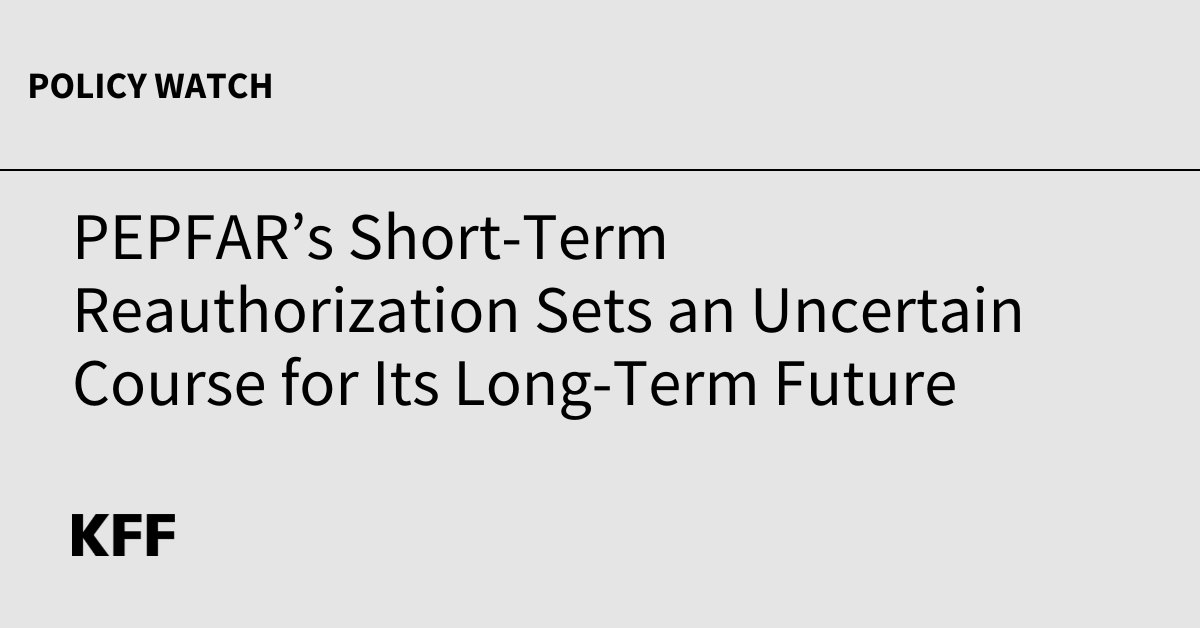
-
PEPFAR Reauthorization: The Debate About Abortion
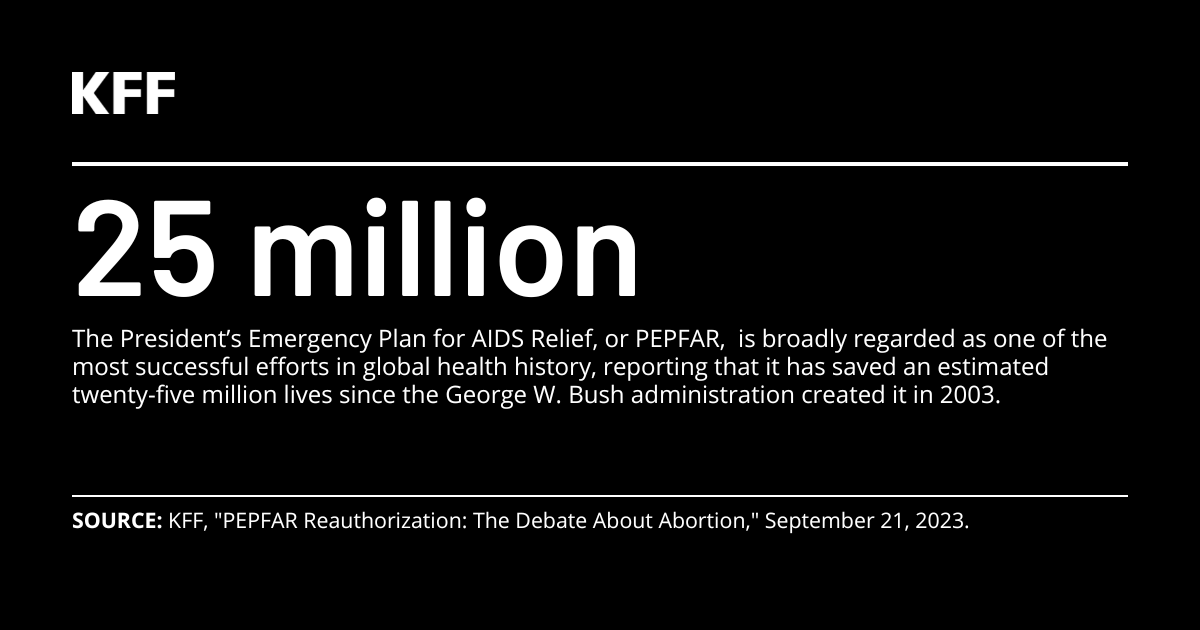
This Policy Watch provides an overview of the current debate and key questions related to abortion surrounding the fourth reauthorization of PEPFAR.
-
Sustainability Readiness in PEPFAR Countries
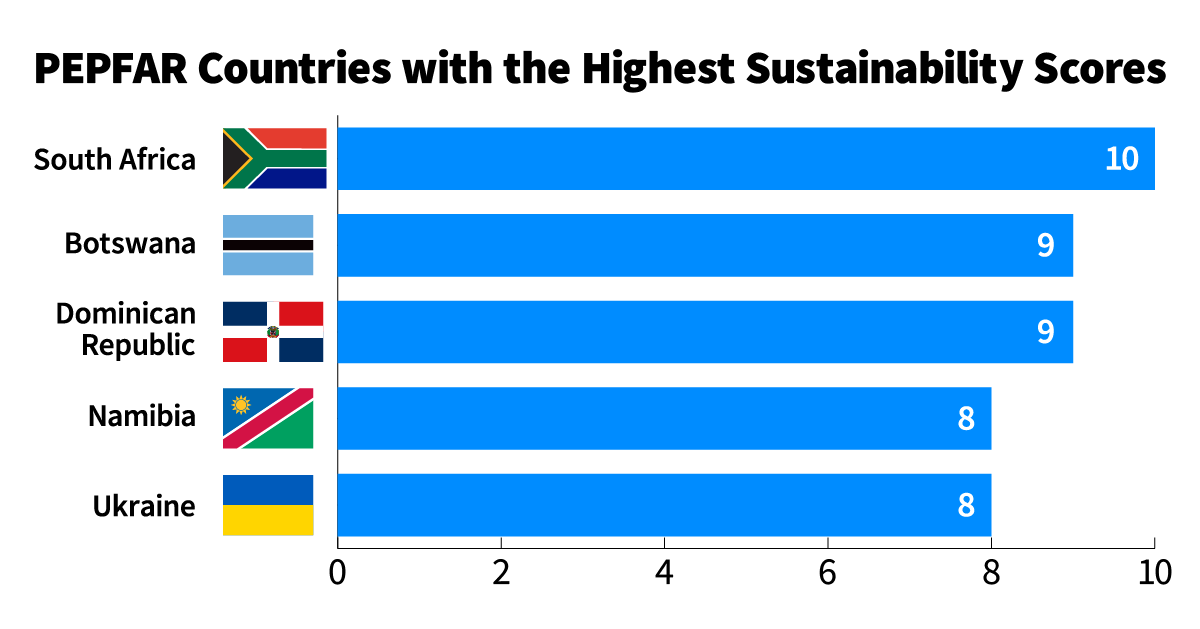
This data note arrays and groups PEPFAR countries by their level of “sustainability readiness” in order to help inform discussions about PEPFAR’s work on sustainability,
-
This report tracks funding levels of the donor governments that collectively provide the bulk of international assistance for HIV, showing that while such funding for HIV increased between 2021 and 2022, this was primarily due to the timing of payments from the U.S. government and not actual increases in commitments.
-
Assessing PEPFAR’s Impact: Analysis of Economic and Educational Spillover Effects in PEPFAR Countries
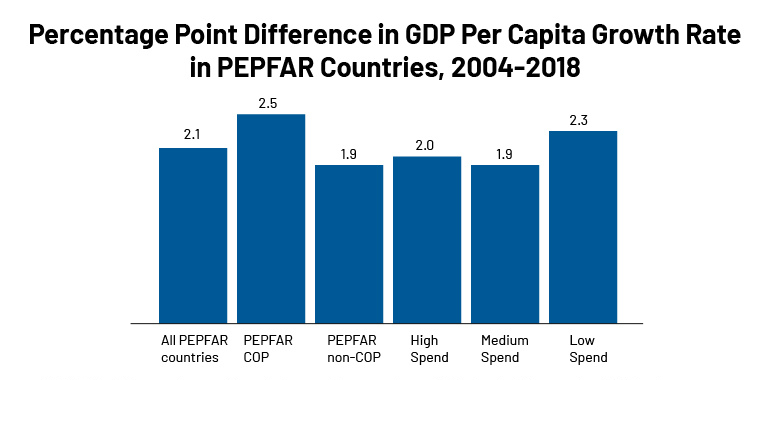
This analysis assesses the association between PEPFAR investments and several economic and educational outcomes. It finds that the program was associated with a significant increase in the GDP growth rate per capita and a decrease in the share of girls and boys of primary school age who were not in school.
-
Additional KFF PEPFAR Resources

Access a comprehensive list of KFF PEPFAR resources.
-
Key Issues and Questions for PEPFAR’s Future
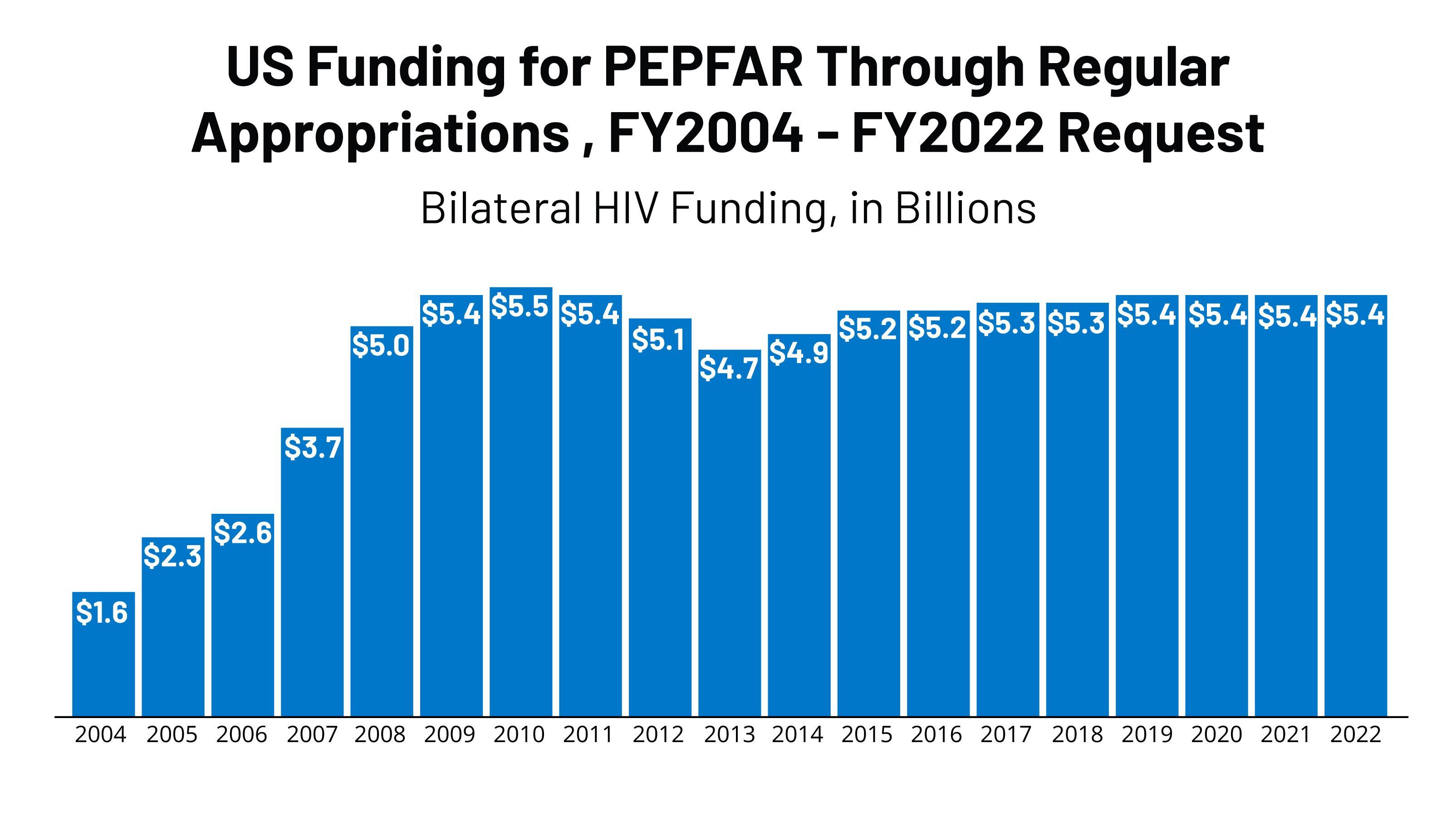
This brief explores key issues and poses questions regarding PEPFAR’s future, providing a roadmap for the major decisions ahead for the program. It identifies eight key, interrelated issues facing the administration, Congress, and other PEPFAR stakeholders.
-
PEPFAR Reauthorization: Side-by-Side of Legislation Over Time
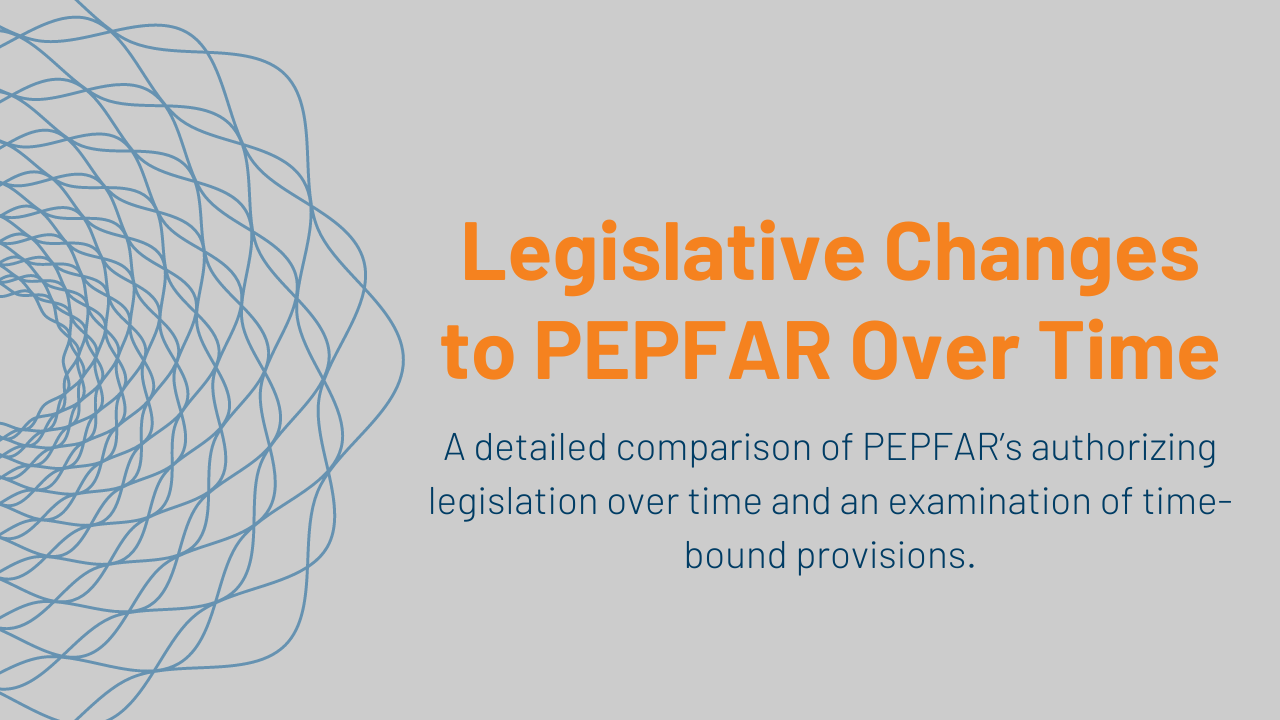
This brief identifies time-bound PEPFAR authorities and also provides a detailed side-by-side comparison of PEPFAR’s authorizing legislation over time.
-
KFF Dashboard: Progress Toward Global HIV Targets in PEPFAR Countries
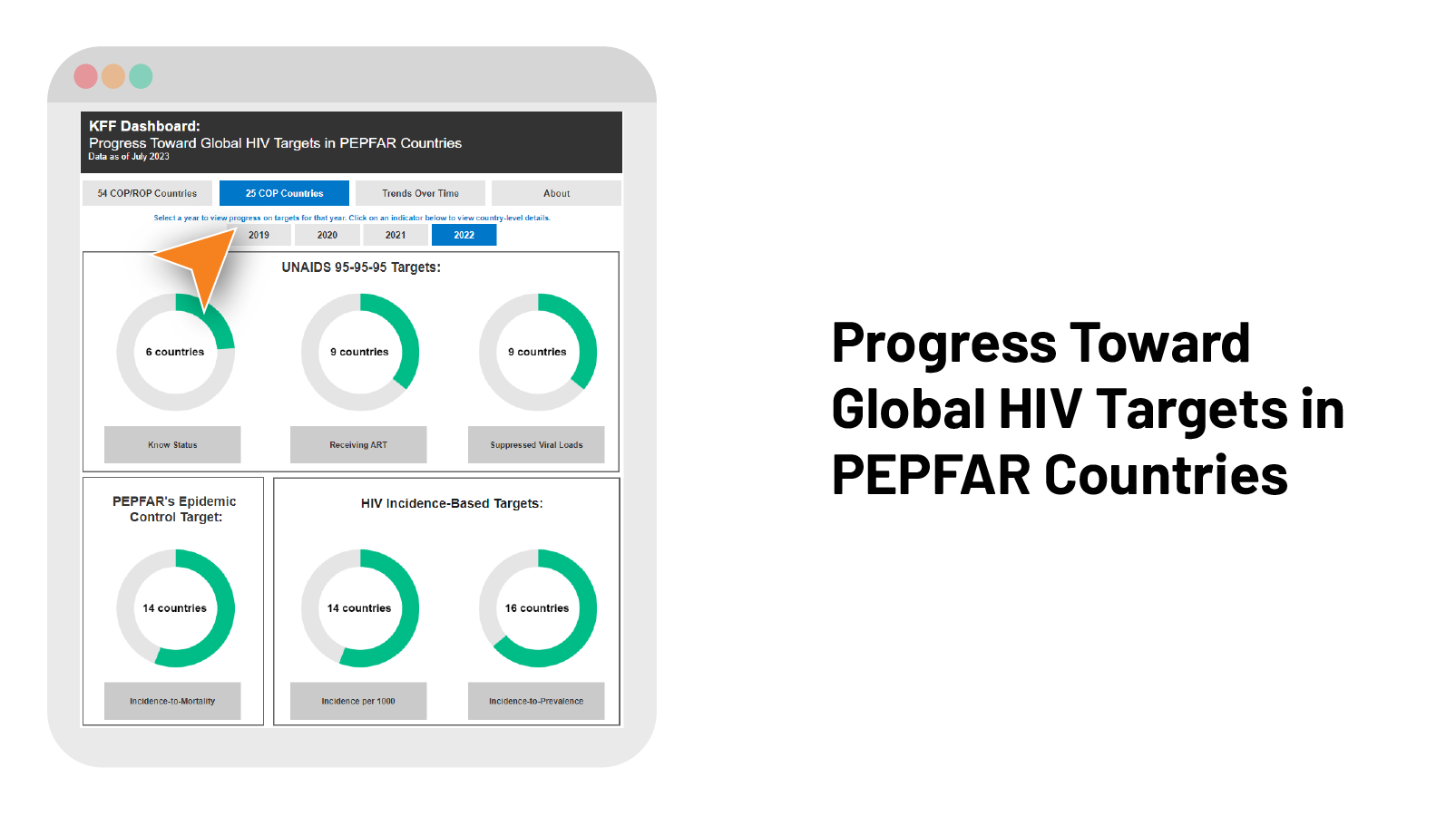
This dashboard monitors progress being made to address the HIV/AIDS epidemic in countries where PEPFAR operates. It includes data for 54 countries and tracks progress against 6 different indicators.
-
Breaking Down the U.S. Global Health Budget by Program Area
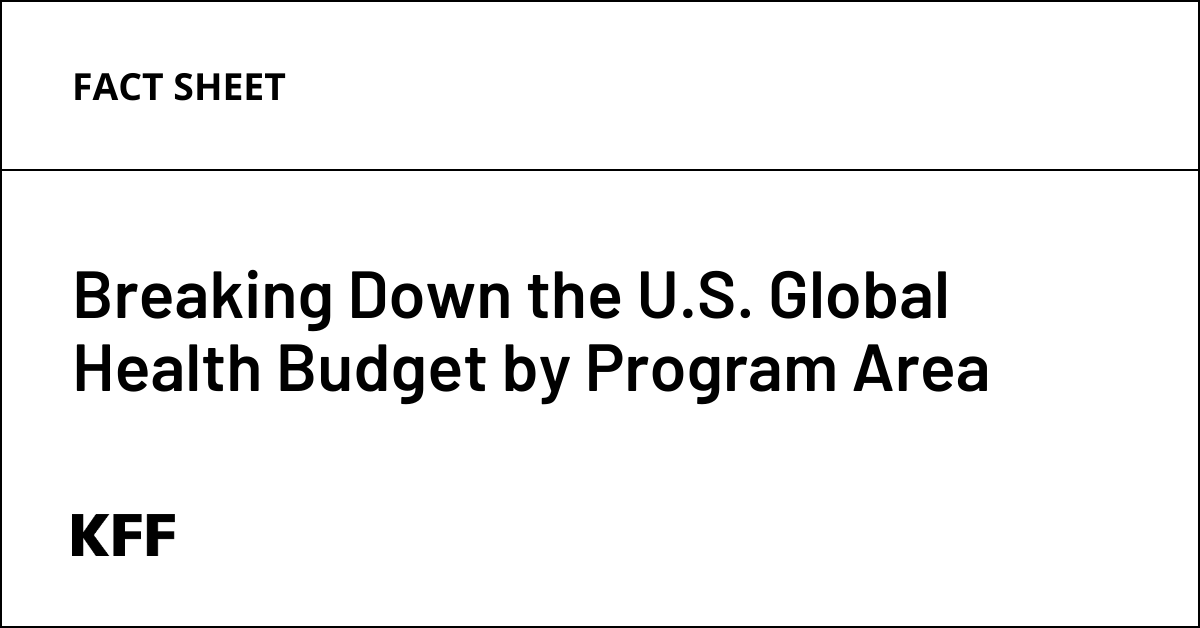
The U.S. government is the largest donor to global health in the world. This fact sheet breaks down the U.S. global health budget by program area: HIV/PEPFAR; tuberculosis; malaria/the President’s Malaria Initiative; the Global Fund to Fight AIDS, Tuberculosis, and Malaria; maternal & child health; nutrition; family planning & reproductive health; global health security; and neglected tropical diseases.
-
The U.S. President's Emergency Plan for AIDS Relief (PEPFAR)
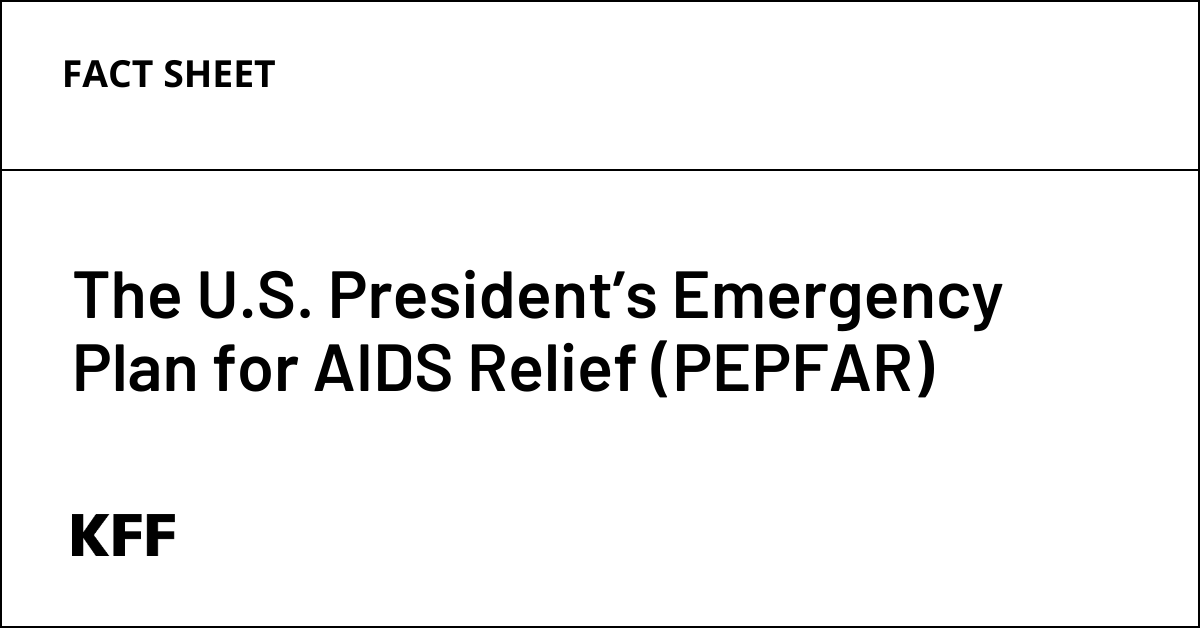
This fact sheet looks at the history, funding, and future outlook of PEPFAR, the U.S. government’s major global initiative to combat HIV/AIDS.
-
PEPFAR Legislation
Includes PEPFAR’s original authorizing legislation, as well as each subsequent reauthorization legislation.
-
PEPFAR Strategies
Includes all of PEPFAR’s multi-year strategies, as well as related documents.
-
PEPFAR Annual Country and Regional Operational Plan (COP/ROP) Guidance
The COP/ROP guidance underpins the development of annual plans by both bilateral and regional PEPFAR programs.
-
PEPFAR Country and Regional Operational Plans (COPs/ROPs)
Country or Regional Operating Plans (COP or ROP) serve as annual strategic plans for U.S. HIV/AIDS efforts in host countries.
-
PEPFAR Technical Guidance in the COVID-19 Pandemic
Routinely-updated technical guidance developed by PEPFAR that addresses a variety of COVID-19-related issues facing its field programs.
-
PEPFAR Panorama Spotlight – Data Dashboards
PEPFAR’s database that includes numerous indicators related to PEPFAR’s activities and the people they serve, as well as planned funding, expenditures, and other data.
-
PEPFAR Monitoring, Evaluation, and Reporting (MER) Indicators – Reference Guide
Reference guide to PEPFAR’s Monitoring, Evaluation, and Reporting (MER) indicators. Data can be found on PEPFAR’s Panorama Spotlight.
-
Population-Based HIV Impact Assessments (PHIAs) in PEPFAR Countries
PEPFAR-funded nationally representative surveys that capture the state of HIV epidemics in PEPFAR countries.
-
PEPFAR Annual Reports to Congress
Annual reports to the U.S. Congress on PEPFAR’s activities, as required by the program’s legislation.
-
PEPFAR Annual Reports to Congress on HIV Treatment
Annual reports to the U.S. Congress focused on PEFPAR’s HIV treatment efforts.
-
National Academies of Sciences, Engineering, and Medicine's Evaluation of PEPFAR
These congressionally-mandated evaluations of PEPFAR examine various periods of the program’s implementation.
-
amfAR’s PEPFAR Country/Regional Operational Plans (COPs/ROPs) Database
This database from amfAR includes planned funding taken directly from publicly released operational plans, including planned funding and expenditures by program area, country, and organization.
-
amfAR’s PEPFAR Monitoring, Evaluation, and Reporting (MER) Database
This database from amfAR serves as a tool for analyzing PEPFAR’s MER data.
-
HIV Policy Lab
Georgetown University’s HIV Policy Lab online platform monitors HIV-related laws and policies adopted by countries around the world, including PEPFAR countries.
